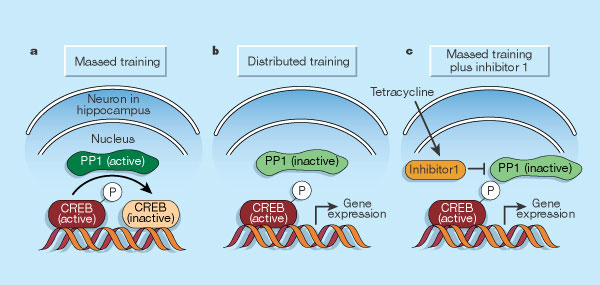| Figure 1
Learning and forgetting — a tale of molecular antagonism. Genoux et al.2 studied the molecular and cellular basis of memory by inserting into mice a gene that is activated, particularly in the brain's hippocampus, by feeding the mice the drug tetracycline. The protein produced from this gene, inhibitor 1, represses an enzyme, protein phosphatase 1 (PP1). a, When the mice were trained in a certain learning task in the absence of tetracycline, with the training crammed into one session, PP1 was active, and dephosphorylated (thereby inactivating) the gene-transcription factor CREB (a circled 'P' represents phosphorylation). This blocked the expression of genes needed for long-term memory formation. b, If training was distributed among more sessions, PP1 activity was lower, CREB was active, and the appropriate genes could be expressed. c, If inhibitor 1 was induced during massed training, repressing PP1, the levels of active CREB rose to those seen during distributed training in b.
|
